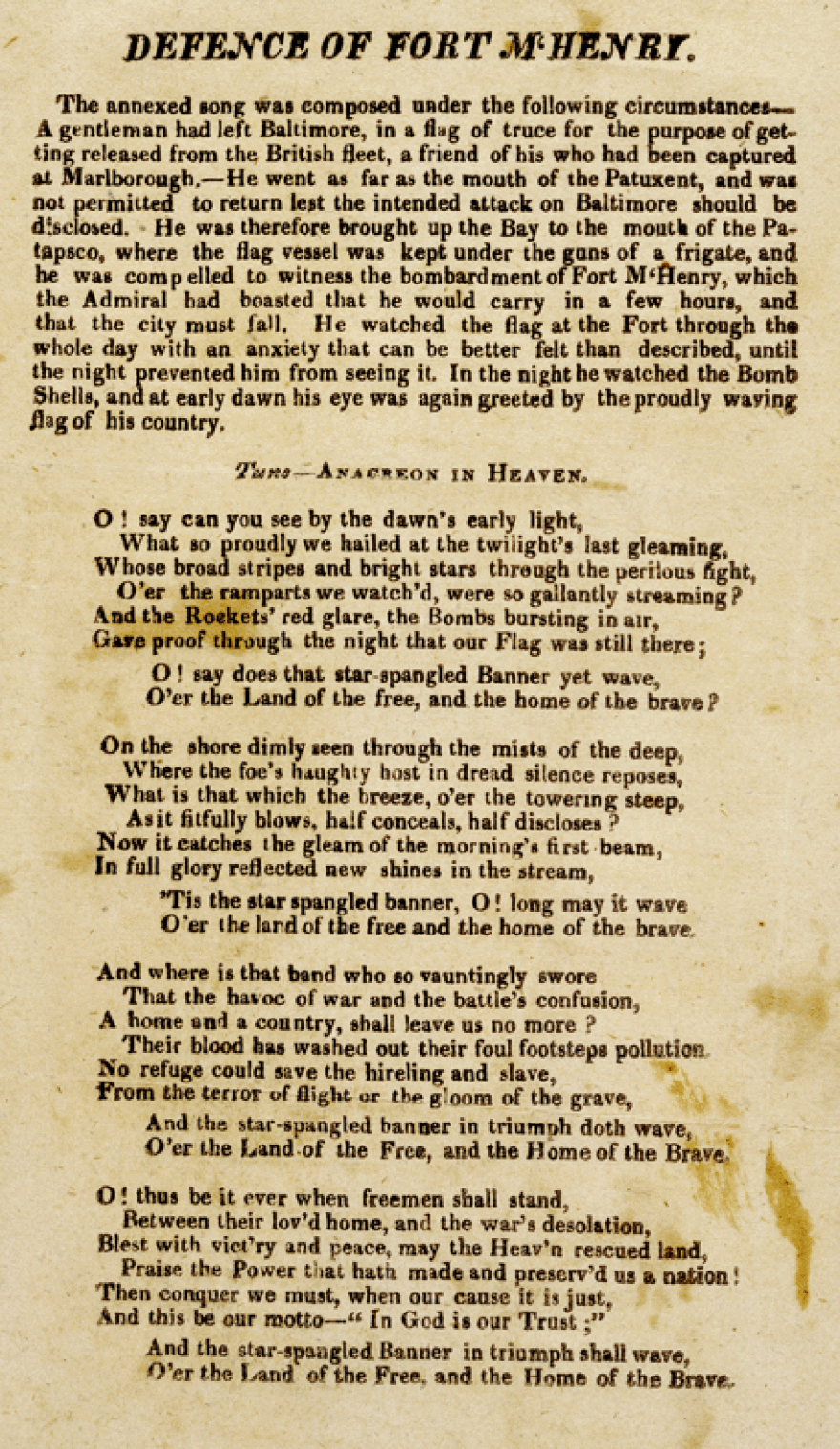The national melody that’s notoriously hard to sing owes its musical roots to a private men’s club. WRTI’sMerideeDuddleston hears the “the bombs bursting in air” anew.
Radio script:

A fierce bombardment by the British one rainy night in Baltimore Harbor led amateur poet and respected lawyer Francis Scott Key to the burst of patriotic emotion that became “The Star-Spangled Banner.”
But at the time, the well-known melody swirling in the young lawyer’s mind was more associated with the theme song of a gentlemen’s music society in London.
MUSIC: “To Anacreon in Heaven” sung by John Townley, from The Top Hits of 1776.
It’s ironic that our national anthem, inspired by a torrent of British rockets aimed at Fort McHenry, is set to a British melody—a song sung by amateur musicians at the Anacreontic Society. In the late 1700s, composer Joseph Haydn was once the honored professional guest of this musical group.
In 1814, no copyright laws prevented Francis Scott Key, and others, from writing their own lyrics for the well-known tune. And they did.
Decades earlier, Francis Hopkinson, a signer of the Declaration of Independence, created a parody of “The Anacreontic Song.” Key himself had used the melody nine years earlier to honor two war heroes in a tribute he called “When the Warrior Returns.” Before the Civil War, abolitionists set their words to the melody highlighting the meaning of “the land of the free.”
MUSIC: “When the Warrior Returns”
Francis Scott Key wrote four verses for a flag that symbolized defiance of the rockets’ red glare and first titled his work “Defence of Fort McHenry.” It was soon christened “The Star-Spangled Banner” and the first verse caught on as Baltimore residents celebrated the American victory over the British in the Battle of Baltimore.
But it wasn’t until 1931 that President Herbert Hoover signed a law solidifying the status of the patriotic standard as the national anthem of the United States of America.

